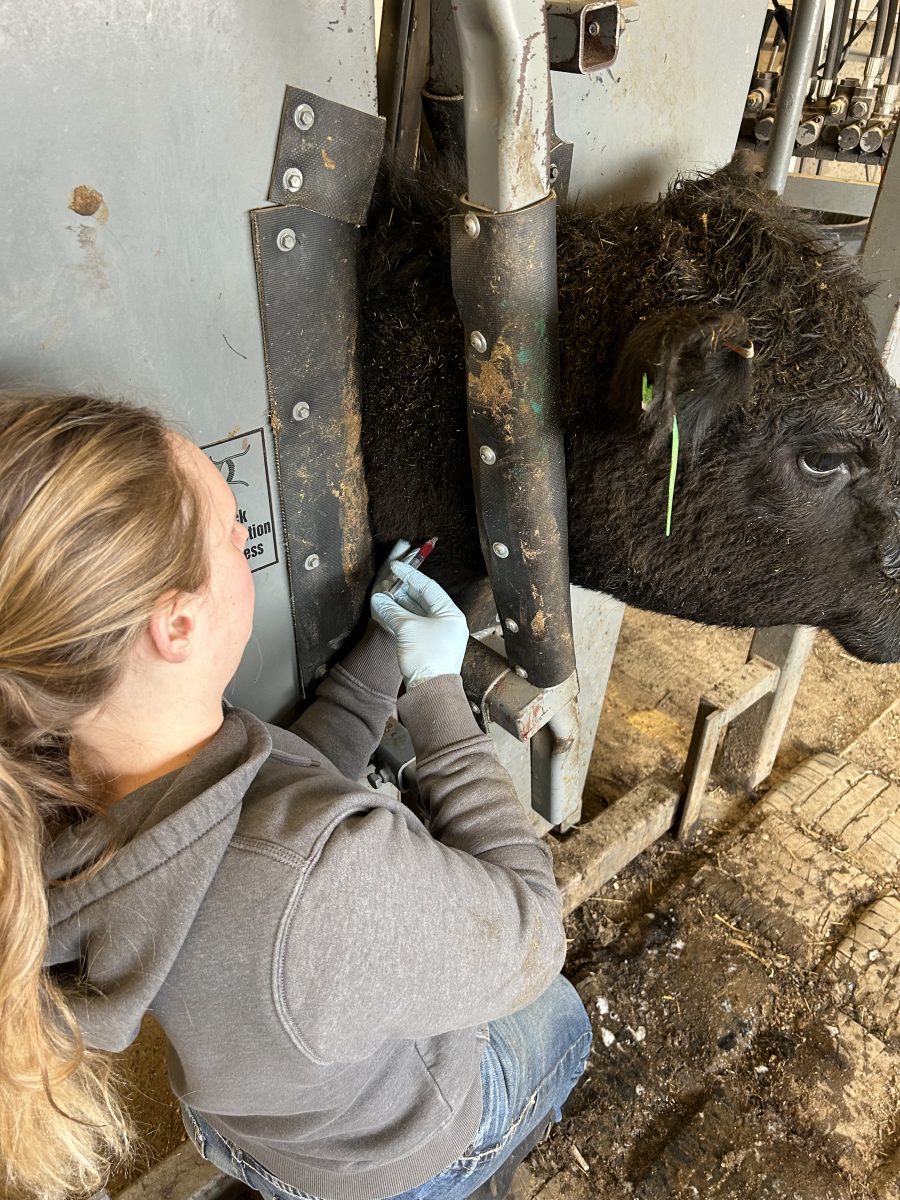Student Health Clinic staffing and space needs a check-up
September 10, 2014
Students trying to get same-day appointments at the Student Health Clinic may have difficulties. Although the clinic is staffed to full capacity, the clinic cannot properly accommodate the volume of students on campus, especially with the growing student population.
The Student Health Clinic, located in the Wellness Center is similar to a regular, primary care clinic that can be found in any community. Services range from routine check ups to helping students who are going to study abroad get the proper vaccinations.
A small portion of students’ General Activity Fee goes to the Student Health Clinic, which allows for students to receive a health evaluation at no charge. According to Brenda Andersen associate director of the Student Health Clinic, the clinic receives about $38 in fees from students taking an average of 16 credits.
This covers visits. For example, if a student goes into the clinic with a sore throat, there will be no charge for the examination. The nurse practitioner will decide if a student needs further care, such as lab work, which comes with a fee. The Health Clinic cannot bill a student’s insurance directly, but students can send the bill along to their insurance for reimbursement.
The Health Clinic is looking into the possibility of adding third-party billing next year, but it is a huge process, Andersen said.
Day to day, the amount of patients that are seen in the clinic varies, depending on the severity of the illness, etc. If the Health Clinic is at capacity and students have an urgent medical need, they will be referred to Avera. Andersen said that anywhere from 12-16 patients are seen per day per provider.
Sophomore advertising major Shanell Peterson tried to get into the clinic last fall to get tested for strep throat. The clinic couldn’t accommodate her request right away, so she said they referred her to Avera.
There are two full-time nurse practitioners on staff each day and a few times per week the practitioners get support from interns from the College of Nursing. One of the providers takes scheduled appointments each day. The other one on staff is an urgent care provider, who gets scheduled right away in the morning with appointments of students that need to get in that day. “It’s tough, we can have a hard time balancing all the needs of students,” Andersen said. “We can’t manage it as well as we’d like, it’s a challenge.”
The most common illness students come to the clinic for are upper respiratory issues, along with flu symptoms. Followed behind that are students seeking medical care for things including orthopedic injuries and issues Andersen said.
Although student enrollment is increasing, the resources in the Health Clinic haven’t gone up to match student demand.
“Two providers is not enough for the volume of students we have on campus,” Andersen said. “Many of our peer universities have a much lower ratio of FTE providers to students.”
Andersen said she hopes that in the next phase of the Wellness Center expansion that the Health Clinic can gain more office space. Currently, there is not enough space to add another provider and the space isn’t there for more exam rooms.
“Students say yes, we need more basketball courts and free lift space, and that’s important, but people don’t think of expanding the Student Health Clinic right away,” Students’ Association President Caleb Finck said.
Andersen, who’s primary job is to oversee the clinic operations, finds herself dropping what she’s doing to help the other providers see patients and balance everything necessary to make the Health Clinic run smoothly.
“It’s a miracle what they do there,” Finck said. “Andersen, who is basically supposed to run things is working as a provider three days a week to see more students when the clinic is busy on top of all her other responsibilities.”
Kayte Kurth, a junior pharmacy major has visited the Health Clinic three times and found that it has been tough to get in at times, but the staff has been accommodating.
“My overall experience with the Health Clinic has been positive,” Kurth said. “You need to be proactive and call right away at 8 in the morning or you’ll have to go off campus, which is a hassle.”
SA is looking into what they can do and how they can allocate student fees to help an expansion happen, Finck said. SA is working on a GAF strategic plan to present to the Board of Regents that will include a budget for a Wellness Center expansion, and included in that an expansion of space and staff for the Student Health Clinic.
“The plan would also bump up the amount of GAF money that goes directly to having more personnel – that’s as important, if not more important than adding onto the building,” Finck said.
Counseling Services is another branch of student health accessible in the clinic. According to Darci Nichols, interim assistant director of Counseling Services, the international accrediting body for counseling centers suggests a ratio of 1 counselor per 1500 students. This means Counseling Services should have an FTE of 6.8, so with 6.5 FTE, they are staffed appropriately at this time Nichols said. One counselor can see six students per day, so total, Counseling Services can accommodate around 38 students per day.
Currently, counseling is pretty accessible, but as the semester moves to midterms and finals, student stress increases and so does the volume of students seeking assistance, Andersen said.
There is an on-call counselor available 24 hours a day during the school year for students who need urgent care or are in a high-risk situation. Students can call the main clinic number and will be connected with access to an on-call counselor. Students can also call the University Police Department to reach an on-call counselor.
“We have great teamwork between Counseling Services and the Health Clinic if we have a common patient.” Andersen said. “It’s very nice.”
Student, faculty and staff members also have access to the Jackrabbit Pharmacy where they can get prescriptions filled and pick up over the counter medication, among other things.
A unique element is the Brookings Family Planning clinic. Students as well as members of the community can access services. It is a community clinic for anyone. Andersen said that the Health Clinic tries have issues related to women’s and men’s health taken care of there to open up more providers to care for patients with illness-related concerns. Family Planning operates on a grant, and therefore is able to do third-party billing. They see patients as young as middle school and high school and spanning to older community member. About 75 percent of patients are SDSU students Andersen said.
“We do the best we can with the resources we have,” Andersen said.




















